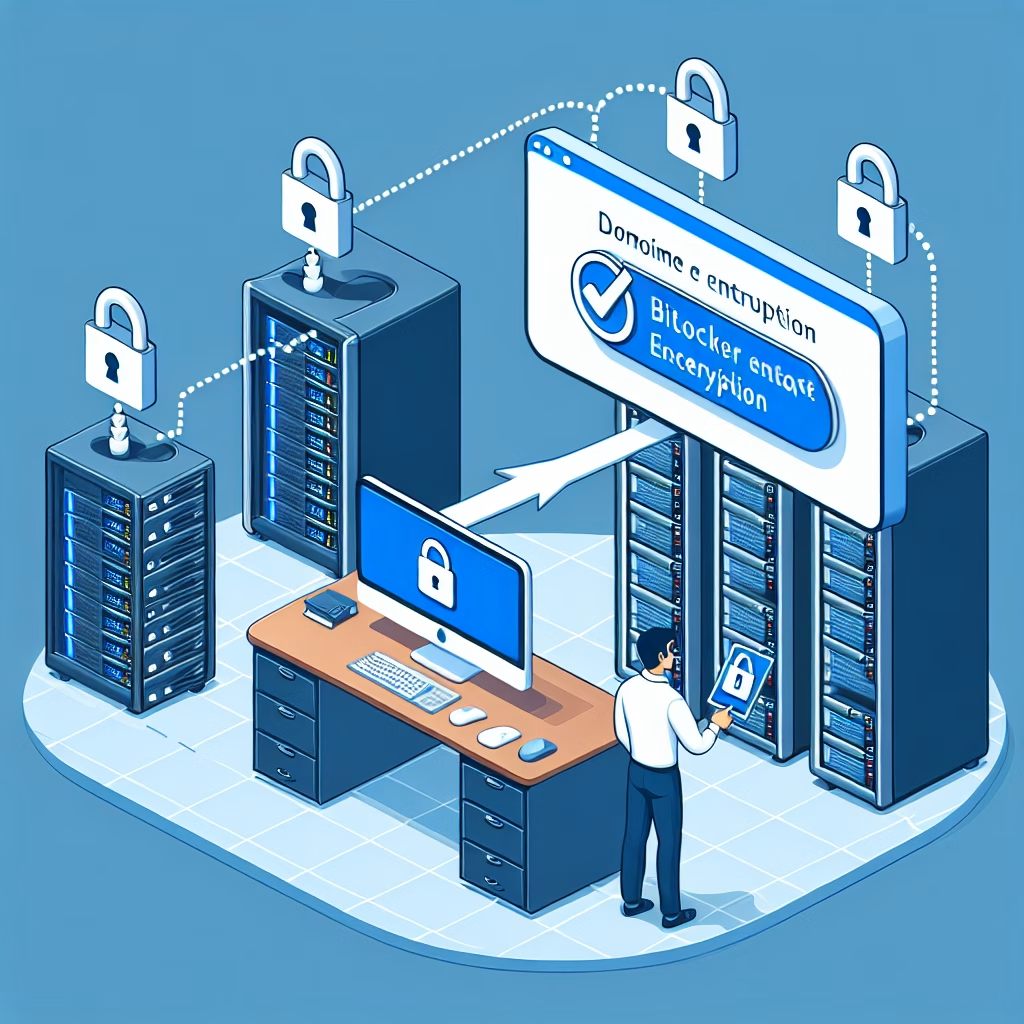Force BitLocker Encryption on Domain Computers
Summary:
Forcing BitLocker encryption on domain computers is a security enforcement mechanism used by IT administrators to ensure all domain-joined machines encrypt their drives to comply with organizational policies. This is typically configured via Group Policy settings under Computer Configuration > Administrative Templates > Windows Components > BitLocker Drive Encryption. When enforced, BitLocker encrypts the drive automatically during startup or after a system reset, ensuring data protection against unauthorized access. Common triggers include domain policy updates, detected TPM configuration changes, or manual enforcement commands such as manage-bde -on C:. Failure to comply may result in restricted user access until encryption completes.
What This Means for You:
- Immediate Impact: Enforced BitLocker encryption may temporarily slow down system performance or block access until the encryption process completes. Users might also need to authenticate via PIN or Recovery Key if pre-boot authentication is required.
- Data Accessibility & Security: Ensure you back up important data before encryption begins to prevent accidental loss. Store the BitLocker Recovery Key securely in Active Directory (AD) or a trusted location.
- System Functionality & Recovery: If BitLocker gets stuck or fails, use the recovery key (
manage-bde -unlock C: -rk <key>) or check TPM status viatpm.msc. - Future Outlook & Prevention Warning: Regularly monitor GPO compliance and test encryption policies in a staging environment to avoid unexpected lockouts in production.
Explained: Force BitLocker Encryption on Domain Computers
Solution 1: Configuring Group Policy for Forced Encryption
For domain-wide enforcement, use Group Policy Management Console (GPMC):
- Open Group Policy Management (
gpmc.msc). - Navigate to Computer Configuration > Administrative Templates > Windows Components > BitLocker Drive Encryption > Operating System Drives.
- Enable “Require BitLocker backup to AD DS” and set “Configure TPM startup” to Required.
- Force a GP update using
gpupdate /forceon client machines.
This ensures all domain computers encrypt drives and store recovery keys in AD for centralized management.
Solution 2: Resetting the TPM
If BitLocker fails due to TPM errors:
- Open TPM Management (
tpm.msc). - Click “Clear TPM”, then restart the system.
- Reinitialize BitLocker using
manage-bde -on C: -usedspaceonly.
This resolves TPM-related startup authentication failures.
Solution 3: Using the Recovery Key
If BitLocker locks the system:
- Enter the 48-digit Recovery Key during boot or in recovery mode.
- For remote decryption, run:
powershell
manage-bde -unlock C: -rk
Ensure keys are stored in AD or a secure location beforehand.
Solution 4: Data Recovery Options
If BitLocker prevents access to critical data:
- Boot to WinPE and use
manage-bde -unlock C: -rk <key>. - For inaccessible drives, use
repair-bde C: D: -rk <key> -pwto decrypt and recover data to another drive.
People Also Ask About:
- Why is BitLocker asking for a recovery key on a domain computer?
This occurs when the TPM changes, GPO updates, or authentication issues arise. - Can I bypass forced BitLocker encryption on a domain PC?
No, unless you have administrative privileges to modify GPOs. - How do I check BitLocker status via command line?
Runmanage-bde -statusfor encryption details. - What if I lose the BitLocker recovery key?
If not backed up in AD, data recovery becomes nearly impossible.
Other Resources:
Suggested Protections:
- Back up recovery keys to AD.
- Test BitLocker GPOs in a non-production environment first.
- Monitor TPM health using
tpm.mscperiodically. - Enable pre-boot authentication for high-security systems.
Expert Opinion:
Forced BitLocker encryption is critical for enterprise security but must be implemented carefully to avoid operational disruptions. Proper policy testing, TPM management, and recovery key backups are non-negotiable for maintaining both security and accessibility.
Related Key Terms:
- BitLocker Group Policy
- TPM Authentication
- BitLocker Recovery Key
- Domain Encryption Enforcement
- Active Directory BitLocker Backup
*Featured image sourced by DallE-3





